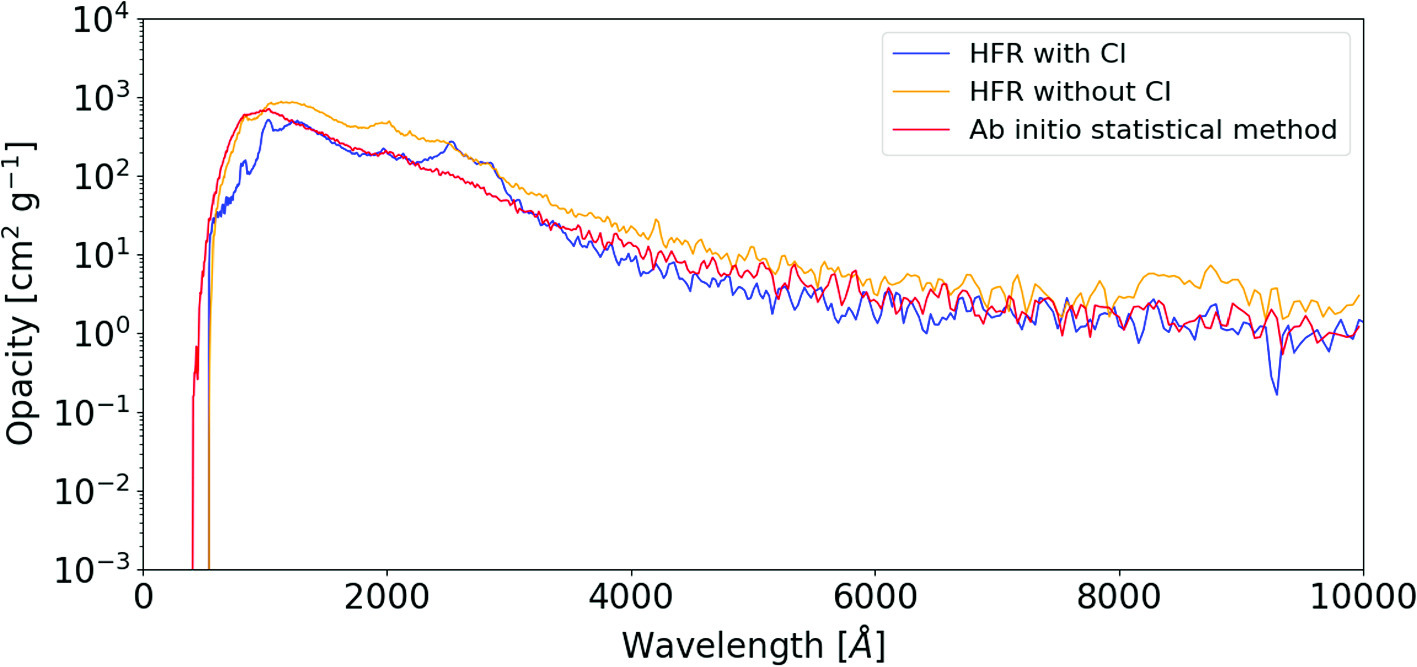https://doi.org/10.1140/epjd/s10053-024-00897-5
Regular Article
Radiative and opacity data obtained from large-scale atomic structure calculations and from statistical simulations for the spectral analysis of kilonovae in their photospheric and nebular phases: the sample case of Er III
1
Physique Atomique et Astrophysique, Université de Mons, 7000, Mons, Belgium
2
Institut d’Astronomie et d’Astrophysique, Université Libre de Bruxelles, 1050, Brussels, Belgium
3
CEA, DAM, 91297, Arpajon, France
4
Laboratoire Matière en Conditions Extrêmes, CEA, Université Paris-Saclay, 91680, Bruyères-le-Châtel, France
5
IPNAS, Université de Liège, Sart Tilman, 4000, Liège, Belgium
Received:
30
March
2024
Accepted:
11
July
2024
Published online:
13
August
2024
This study is an overview of the atomic data and opacity computations performed by the Atomic Physics and Astrophysics Unit of Mons University in the context of kilonova emission following neutron star mergers, in both the photospheric and nebular phases. In this work, as a sample case, we focus on a specific lanthanide ion, namely Er III. As far as the LTE photospheric phase of the kilonova ejecta is concerned, we present our calculations using both a theoretical method (the pseudo-relativistic Hartree-Fock method, HFR) and a statistical approach (the Resolved Transition Array approach, RTA) to obtain the atomic data required to estimate the Er III expansion opacity for typical conditions expected in kilonova ejecta one day after the merger. In order to draw the limitations of both of our strategies, the results obtained using the latter are compared, and a calibration procedure of the HFR atomic data in this context is also discussed. Concerning the kilonova ejecta nebular phase, atomic parameters that characterize forbidden lines in Er III are calculated using HFR as well as another computational approach, namely the Multiconfiguration Dirac–Hartree–Fock (MCDHF) method. The potential detection of such lines in late-phase kilonova spectra is then discussed.
Copyright comment Springer Nature or its licensor (e.g. a society or other partner) holds exclusive rights to this article under a publishing agreement with the author(s) or other rightsholder(s); author self-archiving of the accepted manuscript version of this article is solely governed by the terms of such publishing agreement and applicable law.
© The Author(s), under exclusive licence to EDP Sciences, SIF and Springer-Verlag GmbH Germany, part of Springer Nature 2024. Springer Nature or its licensor (e.g. a society or other partner) holds exclusive rights to this article under a publishing agreement with the author(s) or other rightsholder(s); author self-archiving of the accepted manuscript version of this article is solely governed by the terms of such publishing agreement and applicable law.





